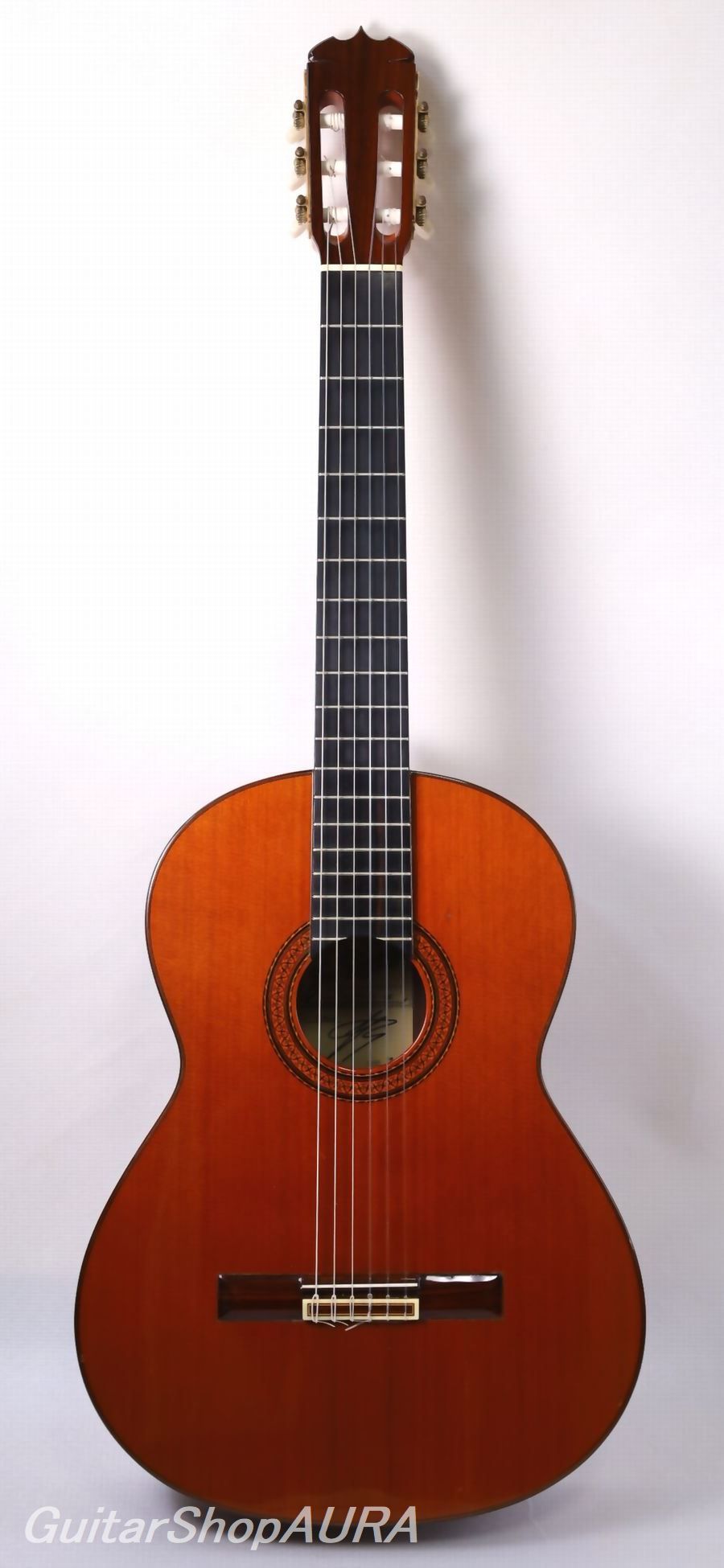
| Instrument | Jose Ramirez III |
| Category | Imported Classical Guitars 〔Used〕 |
| Number/Model | 1a No.15864 |
| Scale length | 664mm |
| Country | Spain |
| Year | 1981Year |
| Top | Solid Ceder |
| Side&Back | Solid Indian Rosewood |
| Condition※ | 7 |
| List price | INQUIRE |
| Price (tax included) | Please Inquire |
| option | with Hardcase |
Click to enlarge the photos below
Neck: Cedro
Fingerboard: Ebony
Finish(Top): Polyurethane
Finish(Back & Sides): Polyurethane
Tuning Machines: Gotoh
String Height(1st): 2.5mm
String Height(6th): 3.5mm
[Luthier Information]
Jose Ramirez is one of the most iconic classical guitar brands in the world, established in Madrid, Spain, and maintained over five generations of master luthiers. Since its founding by Jose Ramirez I (1858–1923), the workshop has played a crucial role in shaping the history of Spanish guitar making.
The most celebrated era of the brand is the period of Jose Ramirez III (1922–1995), often referred to as the 'Ramirez Dynasty.' Ramirez III was a true innovator who transformed the landscape of classical guitar production while retaining the traditional Spanish soul. Under his leadership, the workshop balanced high-level artisan craftsmanship with semi-industrial production techniques, allowing it to scale up while maintaining quality. Esteemed craftsmen like Paulino Bernabe and Mariano Tezanos worked as master luthiers during this golden age.
In 1964, Ramirez III introduced his legendary flagship model, the '1A', featuring:
Western red cedar soundboard (instead of traditional spruce)
Thicker body depth
Double-sided construction with inner cypress lining
Extended 664mm scale length (vs. the standard 650mm)
Urea formaldehyde finish (replacing French polish), increasing durability
A distinctive deep red color and sweet, romantic tone known as the 'Ramirez sound'
These innovations were both practical and artistically bold, profoundly influencing guitar design worldwide. Ramirez guitars from this era, particularly those built in the 1960s through early 1980s, continue to enjoy enduring popularity among collectors and concert performers alike—thanks in part to associations with great players such as Andres Segovia.
After Ramirez III, his son Jose Ramirez IV (1953–2000) took over, officially becoming a master in 1977. He and his sister Amalia Ramirez further modernized the business while preserving the family legacy. Today, the brand continues under the guidance of Jose Enrique Ramirez (5th generation) and Cristina Ramirez, marking over a century of tradition.
[Instrument Information]
Jose Ramirez III – 1A Model – 1981 – Indian Rosewood – Serial No. 15864
This is a beautiful, fully concert-grade Jose Ramirez 1A, built in 1981 and stamped internally with the number '9', identifying it as being crafted by Juan Garcia Rey (JG), one of the elite artisans in the Ramirez workshop at the time.
The 1A model, originally designed in 1964, maintained its core specifications until around 1986, when the standard scale was reduced from 664mm to 650mm and other physical aspects were subtly modernized. However, during the early 1980s, several minor internal and structural adjustments were introduced, resulting in instruments with distinct tonal and ergonomic profiles across different production years.
This 1981 model exemplifies the refined evolution of the 1A: a perfect balance between the romantic tonal richness of earlier decades and a more player-friendly, responsive feel, better suited for modern concert demands.
[Key Features & Tonal Character]
Scale Length: 664mm
Top: Western Red Cedar
Back & Sides: Indian Rosewood
Double sides: inner cypress lining (traditional Ramirez structure)
Finish: Urea formaldehyde
Sound:
Deep, powerful bass with pronounced projection
Sweet, lyrical treble with striking presence
Excellent sustain and clarity for polyphonic repertoire
Balanced dynamic range – rare in 664mm scale guitars
Maintains the unmistakable “Ramirez tone”: rich, dark, and romantic
[Bracing Structure]
The internal bracing follows the classic Ramirez III 1A configuration:
Two harmonic bars (above and below the soundhole)
One angled bar intersecting from bass to treble side directly beneath the soundhole
Six fan braces below the bridge area, divided asymmetrically:
2 on the treble side, 3 on the bass side
Two closing bars near the bottom, arranged in a “V” shape
Extended bridge patch (longer than the bridge itself)
Resonance pitch: just above G#
This bracing layout helps produce the signature body and power that made Ramirez guitars of this era highly sought after by concert performers.
[Condition & Playability]
Condition: Overall very good vintage condition, with some expected wear for its age:
Top:
Two professionally repaired cracks from bridge to lower bout (treble and bass sides)
Reinforced with internal patching
Some playing wear and light dings visible, but cosmetically clean overall
Back & Sides:
Minor wear from clothing contact; no structural issues
Neck:
Straight and stable
Slight fret wear (frets 1–8), but does not affect playability
Modern D-shaped profile, medium-thickness with slight radius
Shallower neck angle than 1970s models = less string tension, more comfort
Fingerboard:
Moderate radius
Unique angled setup: the 6th string side sits higher than the 1st string, offering better ergonomics and a swift action gradient
Action at 12th fret:
1st string: 2.5 mm
6th string: 3.5 mm
Tuners: Upgraded to GOTOH lyre-style machine heads (Fustero-type)
[Summary]
A concert-grade vintage Jose Ramirez III 1A from 1981, built by Juan Garcia Rey, offering:
A superb example of Ramirez’s golden-era craftsmanship
Rare, well-preserved condition with professional repairs
Iconic 664mm scale and traditional double-sides structure
Full-bodied, bold sound with romantic overtones
Balanced playability with improved ergonomics vs. earlier models
Perfect for:
Professional concert players seeking a bold, expressive voice
Collectors of iconic Spanish guitars
Fans of the Ramirez tradition, especially from the 1960s–80s